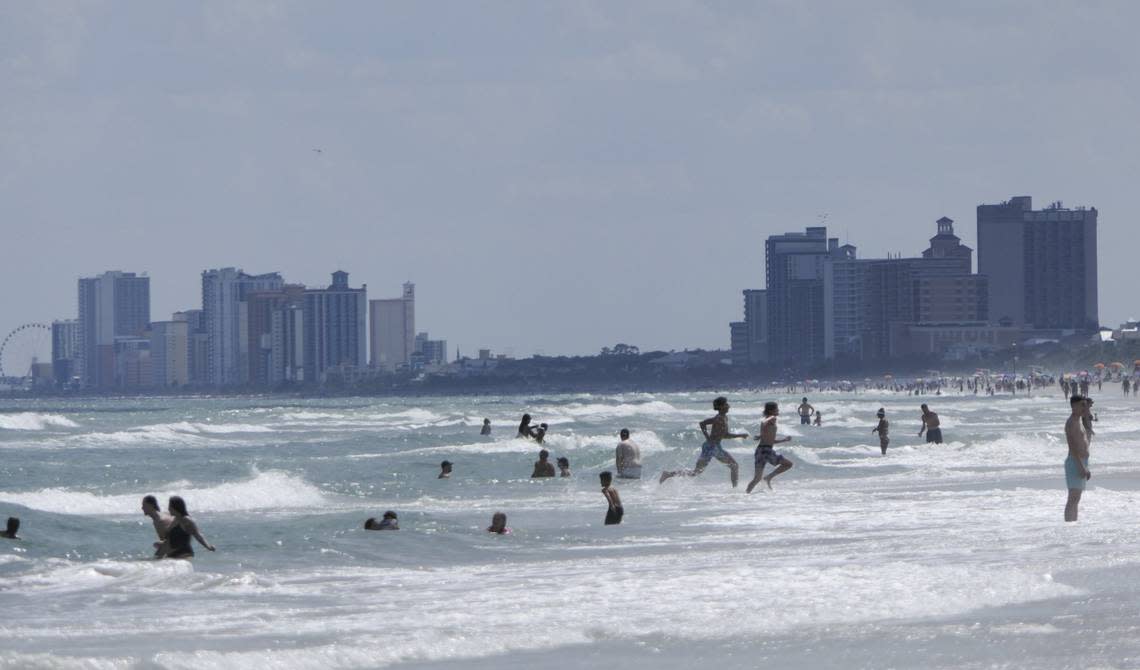Want to avoid an itchy trip to the ocean? Here’s how to avoid sea lice in Myrtle Beach

A summertime vacation by the ocean is often a reward for families looking for rest and relaxation.
Beaches often fill up with vacationers during the summer months looking to get some sun and take a dip in the ocean water. Places like Myrtle Beach are no exception, as more than 17 million visitors flock to the area.
But while many look at summer at the beach as a carefree activity, there’s one issue that frequently disrupts a vacationer’s bliss. People who get in the water often exit with blisters or itchy skin that causes discomfort, with some taking to social media to document their cases.
The problem is rather common in summer months, as people living by the ocean have previously referred to it as ‘sea poisoning’ and ‘ocean itch’. Still, some might wonder what’s caused the red bumps on their skin, sometimes called ‘Seabathers Eruption’. The answer is sea lice. A colloquial term that originated sometime during the 1950s, these tiny critters ruined many beach days for vacationers.
However, these creatures share no relation to the insects that people sometimes become afflicted with in elementary school. According to the Florida Department of Health in Miami-Dade County, sea lice are generally baby jellyfish that sting swimmers once caught in their bathing suits, caps, or skin folds. Lying on the beach or using a surfboard could also trigger a sea lice sting.
Spots and itchy rashes typically appear within four to 24 hours after a sea lice sting. According to a research paper on the Florida Department of Health in Miami-Dade County’s website, women who wear one-piece bathing suits and people who wear a T-shirt in the water can be more susceptible to sea lice stings, which often have a prickling feeling associated with them.
The phenomenon’s prevalence in Myrtle Beach is partly a confluence of peak vacation season and natural factors. Sea lice stings are most prevalent in warm water between March and August, according to the Cleveland Clinic, which coincides with peak tourism season along the Grand Strand.
According to the South Carolina Department of Natural Resources, Myrtle Beach is home to several different species of jellyfish, and in 2024, the Atlantic Ocean is particularly warm according to experts. While a warm ocean might be a catalyst for a rough hurricane season, it also could mean more stings for tourists looking to enjoy the waves.
Lucky for beachgoers, there are steps that people can take to avoid a sea lice outbreak and remedies for impacted swimmers. Beachgoers can check for water quality and safety information at Check My Beach to learn if it’s safe to go in the water.
The Cleveland Clinic also recommends avoiding rubbing any tingling spots while at the beach, usually an early sign of a Seabathers Eruption. The Cleveland Clinic also recommends rinsing off with salt water after leaving the beach and before taking a shower, removing swimwear after the conclusion of the beach day, and washing it as soon as possible.
For swimmers already afflicted with red spots and rashes, The Cleveland Clinic recommends applying ice packs to affected areas, antihistamines and over-the-counter anti-itch cream. And of course, don’t itch.






